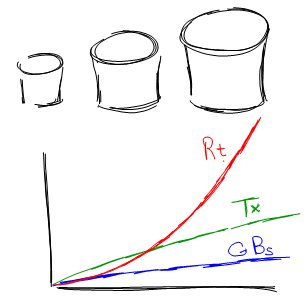4
2012
What is a Database Transaction?
When we are talking about database transaction, we are referring to a work or operation done within a management system of a database against another database using an understandable and reliable approach. This operation is done on its own without relying on another program. The transactions done in a database has two uses. First, the unit of work provided by the transaction produces accurate recovery of data whenever a failure occurs. It also keeps the information within the database accurate during the failure of the system, sudden end of an execution, as well as unfinished operations in a database. Second, the database transaction isolates the database from other programs that is accessing the database at the same time. This helps prevent mistakes with the outputs.
Features of Database Transaction
Most database programmers follow certain database features whenever they create one. Databases should be atomic, isolated, durable, and consistent. Transaction in a database is commonly referred to as all-or-nothing. This means that a transaction should finish totally; otherwise, there will be no effect on the database.

The system should also be able to separate one transaction from another and make sure that the results of a transaction agree with the constraints in the database, and all successful transactions should be placed in a storage that will last a long time.
Most databases and data storages have certain features that allow them to manipulate the transactions within a database in order to preserve the integrity of the recorded information. Each transaction done is composed of a single or several actions that reads and writes the information into a database or data storage. It is better for you to check whether the transaction that occurred is accurate or consistent.
The recently released relational database management systems support transactional databases. Any transaction that is done in a database system may contain more than one manipulation of data either reading the data or writing it into the database or storage. Most database users consider the integrity and consistency of the data whenever they are making transactions. Most transactions done use query languages such as SQL. There are steps that are followed by these query languages, and these are – starting the transaction; carrying out a number of data queries and manipulations; if no errors are found, then transaction is ended; and of course, if an error occurs, the action is reverted to its origin and then ended.
All-or-Nothing
When no errors occur during the transaction, all the operation that happened and the result will be persisted into the database. This means that all action done within the transaction and its end result will then be stored into the database or in data storage. But, when an error happens, the transaction will then revert to its original state and end the transaction without altering anything within the database. There is no event in a database transaction where it is half done. The transaction should either be finished in its entirety or not. This is to ensure that all information within the database is accurate and consistent with one another.
Further readings
Advertisements
Recent Posts
- What is a Disaster Recovery Data Center
- What is a Relational Database?
- What is a Flat File Database?
- What is a DSN or Database Source Name?
- What is a Disaster Recovery Plan?
- What is an Open Source Database?
- What is Disaster Recovery?
- What is a Database Cluster?
- What are Database Servers?
- What are Database Forms?
Random Posts
- What is a Database Management System or DBMS?
- What is Database Development?
- What is an Object Database?
- What is a Database Schema?
- High Availability Solutions
- What are Database Indexes?
- What is a Data Mart?
- What is an Online Database?
- What is ODBC or Open Data Base Connectivity?
- Installing your first WordPress script

 An article by
An article by 




